The best 4K camera 2024: top choices for video creators
The best 4K cameras for movie makers and content creators
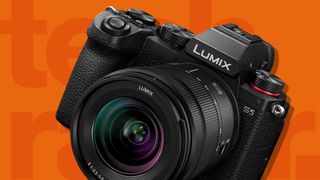
1. The list in brief
2. Best overall
3. Best vlogging
4. Best value full-frame
5. Best professional
6. Best pocket
7. Best pro hybrid
8. Best enthusiast
9. How to choose
10. How we test
Whether you’re shooting video content for social or producing a full-length feature film, the best 4K camera will help you capture cinematic footage to impress your audience. From pocket recorders to flagship filming tools, we’ve extensively tested the latest and greatest 4K cameras, before recommending our favorites in the guide below. So whatever you’re working on, you’ll find the right 4K camera for your needs and budget here.
We think the best 4K camera for most people is the Panasonic Lumix GH6. Great to handle yet equipped with an arsenal of video modes and options, it’s a 5.7K powerhouse that undercuts the Sony A7S III. And while it’s bigger than the GH5 II, its Four Thirds sensor size means it’s still convenient for shooting on the move.
If 4K vlogging is on the agenda, we also highly rate the Sony ZV-E1. Pairing a relatively small form factor with the full-frame sensor from the Sony A7S III, it’s one of the best vlogging cameras you can buy. Compact yet highly capable, it comes equipped with cutting-edge AI autofocus and auto-framing tricks that simplify life for solo vloggers.
Our guide is designed to help you find the right 4K camera for your chosen niche. Our experienced reviewers have spent hundreds of hours using these cameras in real-world scenarios, recording sample video with different settings and setups, to check every aspect of their performance – from frame rates and stabilization to usability and durability. We’ve distilled the results of these in-depth reviews into the ranked list below, complete with useful buying tips to bear in mind when selecting your ideal 4K camera.

Tim is TechRadar's Cameras editor, with over 15 years in the photo video industry and most of those in the world of tech journalism, Tim has developed a deeply technical knowledge and practical experience with all things camera related. He’s also worked in video production with clients including Canon, and volunteers his spare time to consult a non-profit, diverse stories team based in Nairobi.
The quick list
If you want to get directly to the best 4K camera for every kind of videographer, the quick list below will give you an instant summary of our favorite options. When you find one that takes your fancy, use the links beneath each entry to jump to our full summary.
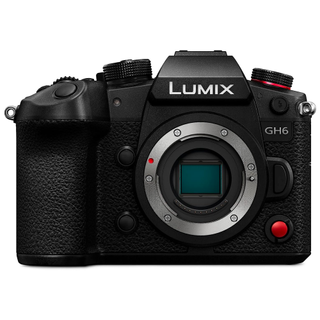
The best 4K camera overall
Relatively lightweight and lovely to handle, the Panasonic Lumix GH6 is a 5.7K movie machine that’s stacked with video modes and options.

The best 4K camera for vlogging
The most capable vlogging camera on the market, the Sony ZV-E1 pairs a proven full-frame sensor with a compact build and AI smarts.
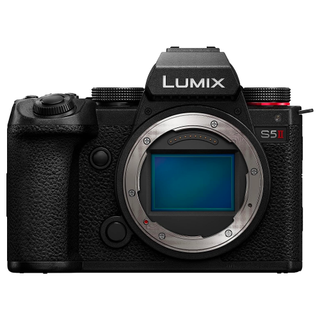
The best value full-frame 4K camera
Using phase detection AF and effective stabilization, the Panasonic Lumix S5 II is a versatile workhorse that shoots uncropped 6K video.
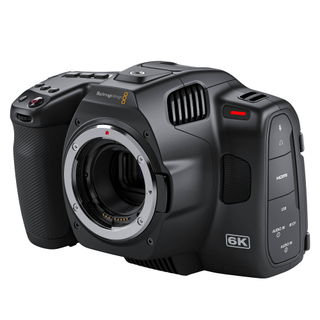
The best professional 4K camera
This movie maestro is a fantastic tool for professional videographers, with an unfussy design, solid battery life and superb 6K image quality.

The best pocket 4K camera
A stabilized gimbal that fits in your pocket, the DJI Pocket 2 uses automatic tracking to help solo videographers shoot sharp, steady footage.
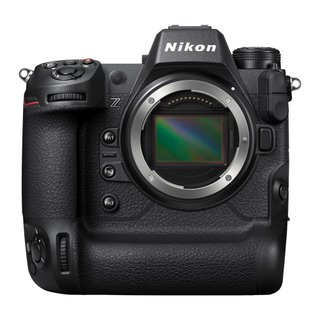
The best professional hybrid 4K camera
A full-frame flagship with 8K skills, the Nikon Z9 employs an electronic-only shutter to deliver remarkable performance for stills and video.
Load the next product...

The best enthusiast 4K camera
Provided you don’t hit its recording limits, the Canon EOS R5 is a fantastic hybrid with outstanding video specs, including 4K/120p recording.
The best 4K camera in 2024
Why you can trust TechRadar
The best 4K camera overall

Specifications
Reasons to buy
Reasons to avoid
If you're looking for a lightweight 4K camera with huge videography potential, the Panasonic Lumix GH6 is a Micro Four Thirds flagship for filmmakers first and foremost. More manageable in the hand than a full-frame heavyweight, we think the GH6 benefits from superb handling and a thoughtful control layout. It features recording buttons front and rear, tally lights and a multi-angle touchscreen, all of which made for easy framing and shooting in our experience.
Despite its relatively compact proportions, the GH6 is a video powerhouse. It offers a huge range of 10-bit ProRes and anamorphic video modes, plus built-in color profiles. It can shoot 5.7K footage at 60fps, supported by 7.5 stops of in-body image stabilization. In short, it’s a movie monster. Yet in testing, we ran into zero overheating issues. And while its smaller sensor could affect low-light performance, we captured good results at twilight.
We think its 25.2MP sensor and autofocus system are designed every bit with video in mind. If you need the fastest AF, other brands offer speedier systems, but the GH6’s contrast-based autofocus still proved reliable in testing. All this, in a package that weighs less than a kilogram and fits in a small camera bag.
Read our in-depth Panasonic Lumix GH6 review
The best 4K camera for vlogging
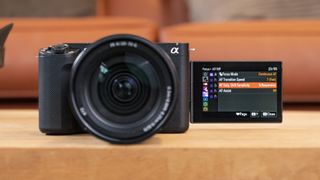
Specifications
Reasons to buy
Reasons to avoid
If you want a compact vlogging camera with class-leading video, we think the ZV-E1 should be top of your list. In our review, it delivered Sony’s best-quality 4K footage, harnessing the superlative 12.1MP sensor from the A7S III to deliver clean 4K/60p footage in any light. We found that its S-Cinetone color profile looks fantastic out of the camera, too.
Its compact body is also easy to carry and operate when shooting solo, weighing in as Sony’s lightest full-frame camera with in-body image stabilization. That said, while the vari-angle LCD display offers full touch functionality, we were slightly underwhelmed by it in testing, finding it hard to read outdoors. The camera’s proportions also come with compromises: there’s just a single card slot and no cooling vents.
But there’s no denying the video capabilities of the ZV-E1. Its image stabilization system proved superb at smoothing handheld footage, while class-leading AI smarts mean footage is almost always in focus. It can take care of framing too, courtesy of an Auto Framing trick that tracks the subject as if there’s a manual operator – a huge boon for vloggers working alone to capture 4K content.
Read our in-depth Sony ZV-E1 review
The best value full-frame 4K camera
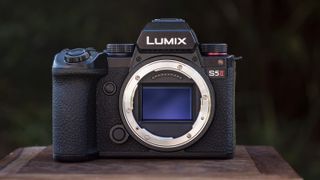
Specifications
Reasons to buy
Reasons to avoid
The original Lumix S5 was one of our favorite 4K cameras and things only get better with the second edition. Like its predecessor, we found the Lumix S5 II relatively small yet solid in the hand. It’s neatly packaged too, with direct-access controls making it an intuitive tool to use. We only wish it had a tally light.
Video is very much its forte. Results from our tests proved the quality of its 6K/30p footage to be excellent, with notably wide dynamic range and rich colors. We also welcomed the flexibility offered by open gate recording: because the S5 II shoots 6K using its full sensor area, there’s plenty of room for cropping in post-production. That’s not the case with 4K/60p, which has a 1.5x crop.
Panasonic has finally embraced phase detection AF for video with the S5 II, and it works very well. We also found image stabilization effective for handheld work, making the S5 II a top choice for recording 4K on the run. Serious videographers might be more drawn to the Lumix S5 IIX, with its live streaming options, SSD recording and native support for RAW output via HDMI. But with unlimited recording times, the S5 II is still a fantastic 4K camera for enthusiasts.
Read our in-depth Panasonic Lumix S5 II review
The best professional 4K camera
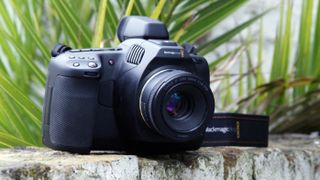
Specifications
Reasons to buy
Reasons to avoid
A substantial upgrade over the Pocket Cinema Camera 6K, the 6K Pro is a fantastic, relatively affordable tool for the professional videographer. With improved battery life, a brighter screen that’s now tilt-adjustable, plus the option of adding an OLED electronic viewfinder, the 6K Pro is a compact yet adaptable maestro.
Its 6K sensor is the same as before, which means you still get exceptional 6K footage at up to 50fps. The Super 35 format is smaller than full frame, but large enough to handle low-light situations with ease, while built-in ND filters mean you can happily film in bright sunlight with wide open apertures. Plus the sheer breadth of formats, profiles and resolutions available make the 6K Pro a properly flexible camera for editors.
That said, it’s clearly not a camera for casual users: its controls might be simple, but there’s no image stabilization, no tracking autofocus and stills performance remains rudimentary. But as a first professional video camera, the 6K Pro is a fantastic package for the price, with superb image quality and relative accessibility making it one of the most rounded enthusiast options.
Read our in-depth Blackmagic Pocket Cinema Camera 6K Pro review
The best pocket 4K camera

Specifications
Reasons to buy
Reasons to avoid
DJI’s dedicated steady-cam puts a stabilized gimbal in your pocket. It’s light, comfortable to hold and features a small 1-inch touchscreen for previewing shots. The 1/1.7-inch sensor won’t trouble mirrorless models, but its 64MP resolution represents a big jump up from the original Pocket. It also offers a much wider 93-degree field of view for more reliable framing when you’re walking and talking. Its compact form factor is broadly the same as before, but pick up the Creator Combo for useful add-ons, including an external wireless mic and ultra-wide-angle lens.
The sensor struggles in low light and high-contrast scenes, but the 3-axis gimbal ensures footage is steady and automatic object tracking is incredibly useful if you’re recording yourself. 4K footage at 60fps isn’t the crispest, but the picture is still respectable and the D-Cinelike color profile makes it easily editable. Full HD slow-mo at 120fps adds welcome flexibility too. Paired with decent sound, it’s an appealing portable package for vloggers.
Read our in-depth DJI Pocket 2 review
The best professional hybrid 4K camera
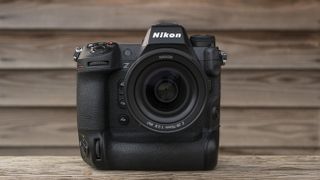
Specifications
Reasons to buy
Reasons to avoid
With no mechanical shutter, Nikon’s new full-frame flagship sets a benchmark for professional hybrids. And while its blistering stills performance will make it a hit with sports and wildlife photographers, it also benefits from class-leading video capabilities. Thanks to a recent firmware update, that includes internal 8K video recording at 60fps.
Styled like the bulky DSLR models of old, this is every bit a modern powerhouse. Besides that headline high-res recording, the Z9 can shoot 4K slow-mo at 120fps, or standard 4K using the full width of its sensor. In testing, results were predictably sharp, a fact helped by decent image stabilization and reliable Eye AF tracking.
Supremely fast scan rates mean we didn’t experience any rolling shutter during our review, while solid battery life and generous 125-minute 8K recording times mean the only limitation is likely to be your memory card. That’s all in addition to remarkable stills performance, plus a new dual-axis tilting touchscreen that we think filmmakers will find handy. Built like a tank and priced more competitively than its Canon EOS R3 rival, it’s a top all-rounder for expert videographers.
Read our in-depth Nikon Z9 review
The best enthusiast 4K camera
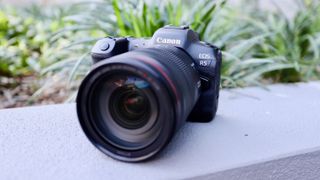
Specifications
Reasons to buy
Reasons to avoid
On paper, the Canon EOS R5 is arguably the best hybrid camera available today. Adopting a tried-and-tested form factor that’s easy to handle, the R5 serves up blistering performance: a 45MP full-frame sensor is supported by the speedy Digic X chip, paired with Canon’s fastest ever autofocus motor.
Video specs are similarly outstanding. The EOS R5 can capture 4K footage at a silky smooth 120fps, with the option of shooting raw, while resolution maxes out at a headline-grabbing 8K/30p. Results are gorgeously sharp, while the combination of IBIS with stabilized RF-mount lenses delivers decently smooth handheld shots – plus log files provide incredibly flexible when it comes to color grading.
There is a caveat: the EOS R5 features recording limits to combat overheating, with a published maximum of 35 minutes for 4K/60p video. That’s a significant limitation for professional filmmakers, but there’s a good chance those who shoot a selection of shorter clips won’t ever encounter that barrier (we didn’t). Provided that’s the case for you – and you’re happy to shell out on CFExpress cards to unlock peak performance – the R5 is a fantastic 4K hybrid.
Read our in-depth Canon EOS R5 review
How to choose the best 4K camera for you
How to choose the best 4K camera for you
The best 4K cameras will allow you to record bright, sharp footage in a range of scenarios. Resolution is a key benchmark when selecting a video camera – and every model in the buying guide above can capture footage in 4K, with some going up to 6K and even 8K.
Though the biggest numbers generally translate into the sharpest footage, they may be overkill for you. 8K requires high-performance memory cards and editing tools that can handle the resulting file sizes. Most enthusiast videographers will find factors other than resolution more significant.
Frame rates, for example, are really important to keep in mind. The best 4K cameras can record footage at 60fps for slick real-time shots, as well as buttery-smooth 120fps for slow-motion b-roll – although many cameras can only capture slow-mo at lower resolutions.
You should also keep color profiles and output formats in mind. The top 4K cameras give you the flexibility to record in a way which fits with your workflow. Depending on your setup, that might mean a specific log profile, such as V-Log. Most of the top 4K cameras support log profiles, giving videographers the opportunity to tweak color grading in post-production. The very best models can also record 10-bit video internally for greater depth of color (but larger file sizes).
Other factors to consider will come down to your skill level and how you like to shoot videos. Image stabilization is a must if you want to capture video handheld, but it’s less of an issue if you use a gimbal. Equally, tracking autofocus is handy if you’re upgrading from a smartphone, but it’s not a dealbreaker if you’re already familiar with manual tracking.
A large sensor is great for those who like to record in low-light conditions. Physical design is also worth thinking about: if you tend to shoot solo, aspects like an articulating touchscreen and ergonomic handgrip are useful, as are accessible controls.
And don’t forget about accessories: most of the best 4K cameras include ports for connecting external microphones and headphones, which allow you to transform your 4K footage with professional audio. If your shooting style requires certain peripherals, such as a battery grip or hot-shoe attachment, check that they’re compatible before buying a new 4K camera.
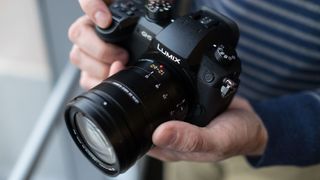
Do you need a 4K camera for streaming?
Many streamers use a 4K camera to capture and share live content in real-time. The main benefit of using a 4K camera for streaming is that it generally offers a sharper, more detailed image than one with 2K resolution. You can also downsample footage to 1080p from the full 4K video feed, which gives you greater flexibility (especially if you’d like to crop in on part of the frame).
However, you don’t necessarily need a 4K camera for streaming. Due to bandwidth constraints, many people only watch videos at 1080p, so 4K may be overkill for your audience – especially if they stream your content on their smartphone’s smaller screen (and using a cellular data connection).
In addition, your own internet connection will need to be fast enough to maintain a steady stream of 4K footage, which is significantly more data-hungry than Full HD. It’s also important to note that, while several cameras support live-streaming, many 4K cameras will actually only allow you to stream at 1080p.
Other factors are usually more important for streamers than resolution alone. This might include in-camera support for direct live-streaming. Panasonic’s GH5 Mark II, for example, can stream 1080p footage straight to platforms like YouTube via Wi-Fi. Equally, aspects such as support for external microphones will be more useful for streamers and vloggers who talk to their audience while on camera.

How we test 4K cameras
Spec sheets can only tell you half the story. That’s why we take every 4K camera out into the real world, to see how it fares in the kind of shooting conditions that most users will encounter.
We usually start with an assessment of build quality and usability. That means checking how durable a camera feels, how easily it handles and what it’s like to carry around for a full day of filming. We check how straightforward it is to operate, whether the control placement feels natural and how intuitive the overall interface is to work with.
We’ll then run each camera through a range of performance tests. That means capturing lots of footage in a variety of scenarios, including high-contrast scenes, studio setups and low lighting. We also take every camera out for a walk, before reviewing the footage to analyze both the overall quality and the effectiveness of any image stabilization system.
Because different users will have different demands of the same camera, we also test how well 4K cameras hold up at different frame rates, shooting slow-motion footage, as well as testing out the color profiles and bit-rates that are available. Finally, we’ll record longer clips to see whether a 4K camera has any recording time limitations, and to assess how its battery will hold up for demanding videographers.
Get daily insight, inspiration and deals in your inbox
Get the hottest deals available in your inbox plus news, reviews, opinion, analysis and more from the TechRadar team.
Formerly News Editor at Stuff, Chris has rarely been able to resist the bite of the travel bug – so he now writes about tech from the road, in whichever Wi-Fi-equipped café he can find. Fond of coffee kit, classic cars and sustainable gear, if there’s one thing Chris loves more than scribbling, shooting and sharing his way around the world, it’s alliterative triplets.
- Mark WilsonSenior news editor

